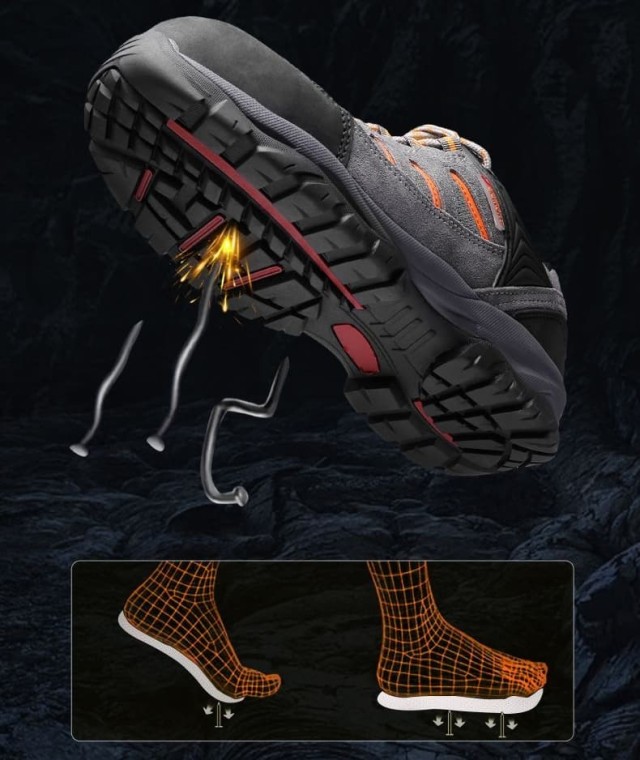Finding the right safety toe boots isn't just about compliance—it's about pairing advanced protection with all-day comfort. This guide breaks down material differences, critical certifications, and ergonomic innovations to help workers and buyers make informed decisions.
The Essential Role of Safety Toe Work Boots
Safety toe boots are the frontline defense against workplace injuries, reducing risks from heavy impacts, punctures, and electrical hazards. Research shows that compliant footwear can lower foot injury rates significantly in high-risk industries like construction and manufacturing.
Key considerations before purchasing:
- Hazard alignment: Does your job involve sharp objects, extreme temperatures, or electrical currents?
- Duration of wear: Will you stand or walk for over 8 hours daily?
- Regulatory requirements: Are there industry-specific OSHA or ASTM mandates?
For bulk buyers and distributors, selecting boots that meet these criteria ensures worker safety while minimizing liability risks.
How Safety Toe Materials Differ: Steel, Composite, and Alloy
Steel Toe
- Pros: Maximum impact resistance (tested to withstand over 2,500 lbs of compression). Ideal for construction and heavy manufacturing.
- Cons: Heavier (typically 20–30% more weight than composite), conducts electricity, and may cause discomfort in cold weather.
Composite Toe
- Pros: Non-metallic (fiberglass or carbon fiber), making them lighter and safer for electricians or airport security personnel. Provides insulation against temperature extremes.
- Cons: Slightly less durable than steel under extreme pressure.
Alloy Toe
- Pros: Balances strength and weight, offering near-steel protection with reduced bulk.
- Cons: Less common and may lack specialized certifications like EH (Electrical Hazard).
Decision tip: For electric utility workers, composite toes are non-negotiable due to their non-conductive properties.
Beyond Toe Protection: Critical Safety Certifications Explained
Safety standards ensure boots meet minimum protection thresholds. Here’s what to look for:
- ASTM F2413-18: Covers impact/compression resistance, puncture protection, and electrical hazard ratings.
- OSHA Compliance: Varies by industry; construction boots often require metatarsal guards.
- EH Rating: Indicates insulation against electrical shocks (up to 600V in dry conditions).
- Slip Resistance: Look for outsoles with tested traction (e.g., oil- or chemical-resistant).
Example: A warehouse worker handling chemicals needs ASTM-rated puncture resistance and slip-resistant soles, while an electrician requires EH-rated composite toes.
Matching Boot Features to Your Job Hazards
For Construction Sites
- Steel or alloy toes with metatarsal guards.
- Deep treads for muddy or uneven terrain.
For Electrical Work
- Composite toes with EH ratings.
- Non-conductive shanks and heels.
For Cold Storage
- Insulated composite toes to prevent thermal transfer.
- Waterproof membranes (e.g., Gore-Tex®).
Pro tip: Bulk buyers should assess workforce hazards collectively—uniformity in safety features simplifies compliance audits.
Comfort Innovations for All-Day Wear in High-Risk Settings
Even the safest boots fail if workers avoid wearing them due to discomfort. Modern designs integrate:
- Arch support: Reduces fatigue by distributing weight evenly.
- Cushioned midsoles: Absorb shock from prolonged standing.
- Breathable linings: Prevent moisture buildup during 12-hour shifts.
Studies link ergonomic footwear to a 15–20% reduction in fatigue-related errors. For distributors, emphasizing these features can differentiate products in competitive bids.
Ready to Equip Your Team with Optimized Safety Footwear?
3515 combines decades of manufacturing expertise with cutting-edge safety and comfort technologies. Whether you’re a distributor supplying industrial sites or a brand owner launching a safety line, our scalable solutions ensure compliance without compromising wearability.
Contact 3515 today to discuss custom configurations tailored to your workforce’s unique hazards and comfort needs.
Related Products
- Wholesale Customizable Suede Safety Boots - Puncture-Proof with Velcro Closure
- Customizable Anti-Smash Safety Boots for Wholesale & Private Label Manufacturing
- Wholesale Slip-On Safety Boots Manufacturer - Custom Puncture-Proof & Steel Toe
- Durable Leather Safety Boots for Wholesale & Custom OEM Manufacturing
- Wholesale Durable Safety Boots Manufacturer Customizable Steel Toe Work Boots
Related Articles
- How to Choose Work Boot Materials for Maximum Safety and Durability
- How to Choose Work Boots That Match Your Job's Safety Demands
- Work Boots vs. Western Boots: How to Choose the Right Footwear for Labor Safety
- How to Choose Work Boots That Balance Safety, Comfort, and Durability for Your Job
- How to Extend Work Boot Lifespan: Science-Backed Care for Safety & Savings



















